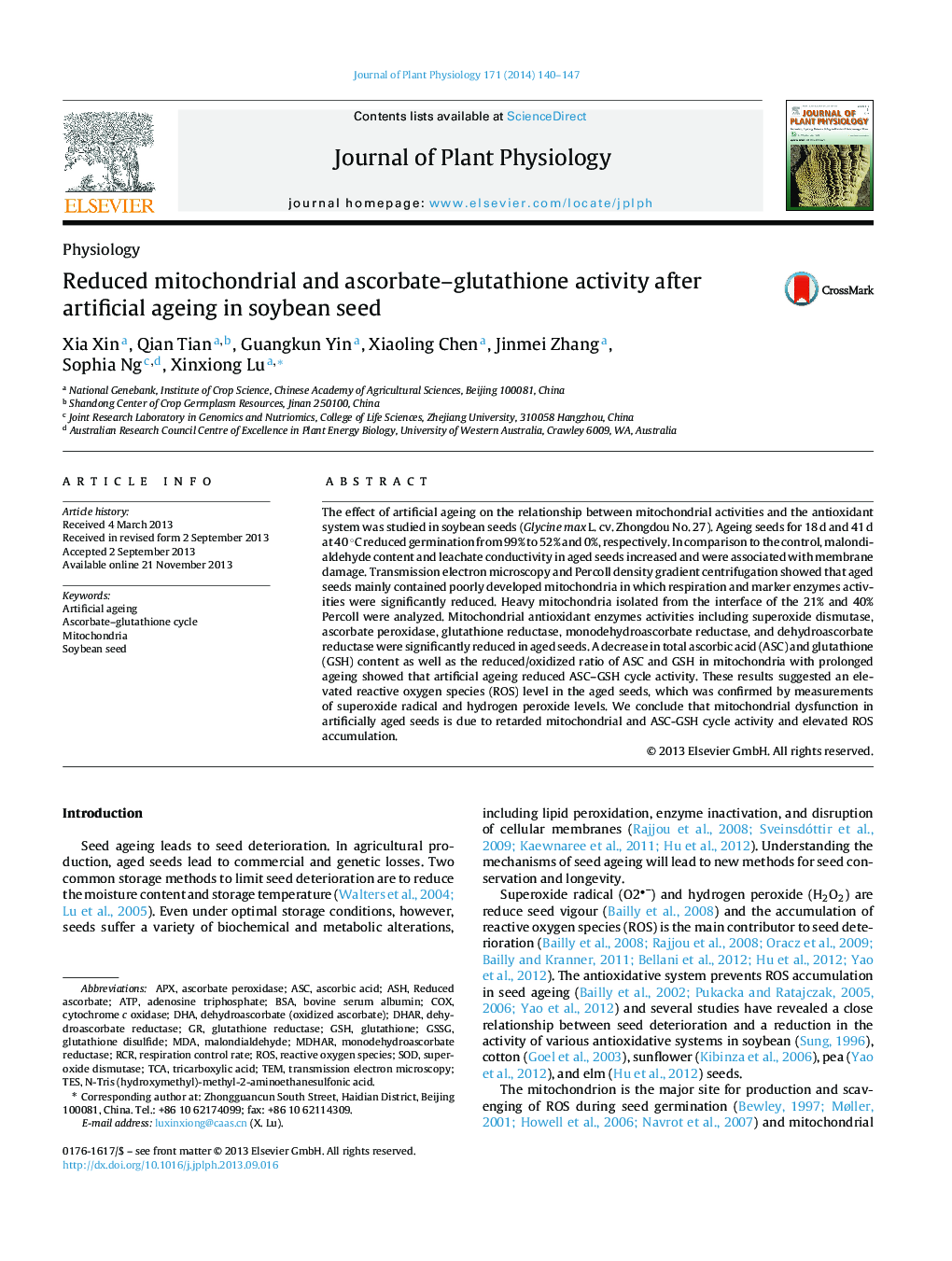| Article ID | Journal | Published Year | Pages | File Type |
|---|---|---|---|---|
| 10876910 | Journal of Plant Physiology | 2014 | 8 Pages |
Abstract
The effect of artificial ageing on the relationship between mitochondrial activities and the antioxidant system was studied in soybean seeds (Glycine max L. cv. Zhongdou No. 27). Ageing seeds for 18 d and 41 d at 40 °C reduced germination from 99% to 52% and 0%, respectively. In comparison to the control, malondialdehyde content and leachate conductivity in aged seeds increased and were associated with membrane damage. Transmission electron microscopy and Percoll density gradient centrifugation showed that aged seeds mainly contained poorly developed mitochondria in which respiration and marker enzymes activities were significantly reduced. Heavy mitochondria isolated from the interface of the 21% and 40% Percoll were analyzed. Mitochondrial antioxidant enzymes activities including superoxide dismutase, ascorbate peroxidase, glutathione reductase, monodehydroascorbate reductase, and dehydroascorbate reductase were significantly reduced in aged seeds. A decrease in total ascorbic acid (ASC) and glutathione (GSH) content as well as the reduced/oxidized ratio of ASC and GSH in mitochondria with prolonged ageing showed that artificial ageing reduced ASC-GSH cycle activity. These results suggested an elevated reactive oxygen species (ROS) level in the aged seeds, which was confirmed by measurements of superoxide radical and hydrogen peroxide levels. We conclude that mitochondrial dysfunction in artificially aged seeds is due to retarded mitochondrial and ASC-GSH cycle activity and elevated ROS accumulation.
Keywords
MDAmonodehydroascorbate reductaseRCRCOXGSSGMDHARdehydroascorbate reductaseDHARAPXGSHTCAASCTESBSAROSAdenosine TriphosphateATPreduced ascorbateAscorbic acidbovine serum albumintricarboxylic acidTemAshSoybean seedDHASODSuperoxide dismutasecytochrome c oxidasemalondialdehydeMitochondriaTransmission electron microscopyascorbate peroxidaseArtificial ageingAscorbate–glutathione cycleGlutathioneglutathione disulfideglutathione reductaseReactive oxygen species
Related Topics
Life Sciences
Agricultural and Biological Sciences
Agronomy and Crop Science
Authors
Xia Xin, Qian Tian, Guangkun Yin, Xiaoling Chen, Jinmei Zhang, Sophia Ng, Xinxiong Lu,
